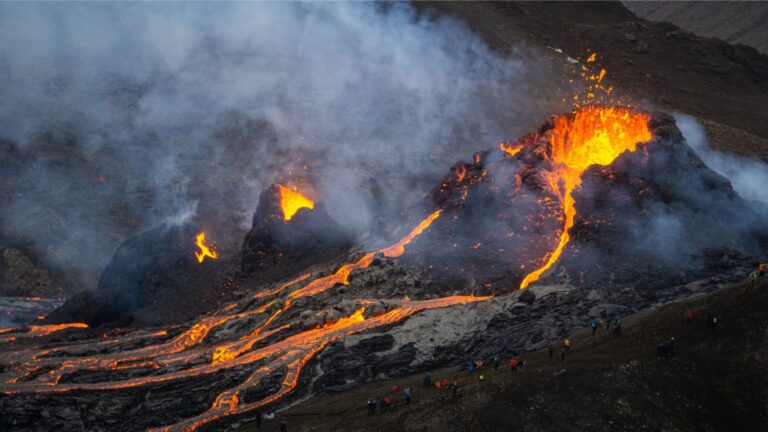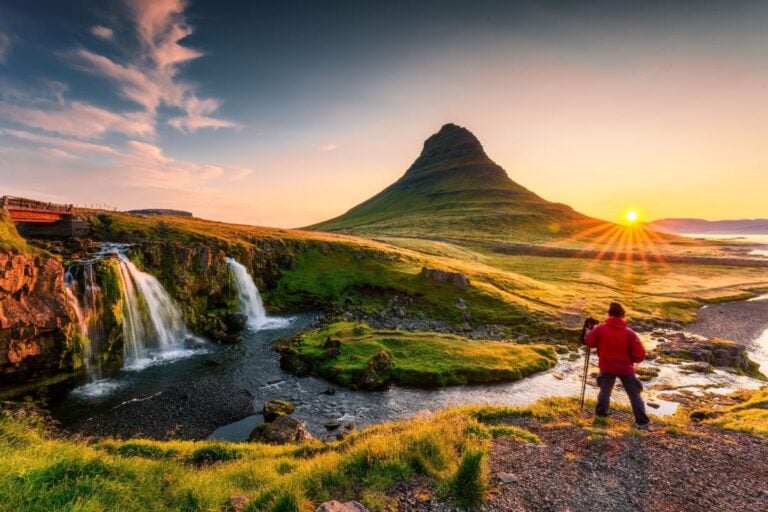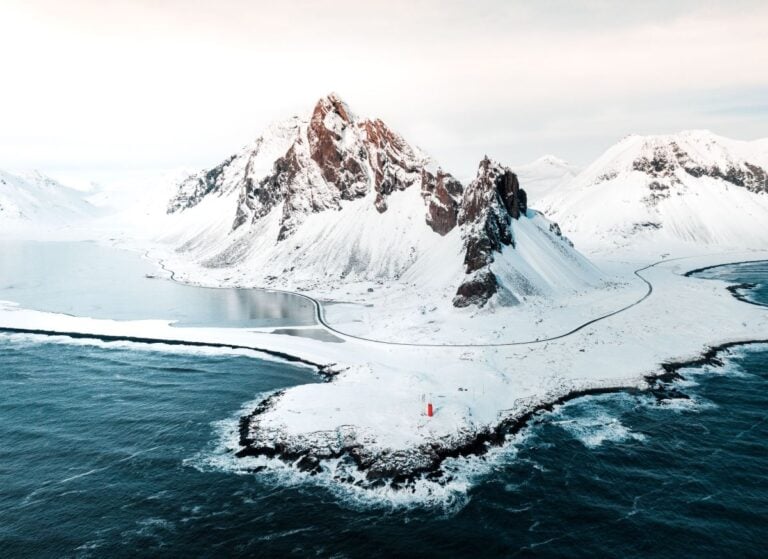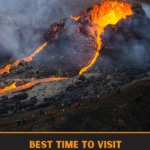Discover the best time to visit Iceland, a land of stunning volcanic landscapes, where every season offers unique experiences from midnight sun to magical northern lights.
There's so much more to the Nordic region than Norway. Iceland, with its captivating volcanic landscapes unlike any other place on Earth, beckons every curious traveller at least once in their lifetime.

Its northern latitude offers a strikingly varied appearance depending on the time of year you choose to explore. Join us as we continue our tour of the Nordic region by taking a closer look at visiting Iceland.
An Introduction to Iceland
The island nation of Iceland is a marvel of nature’s extremes and subtleties. Situated in the North Atlantic, it is renowned for its dramatic landscapes that include volcanoes, geysers, hot springs, and lava fields.
The country’s rugged terrain is interspersed with glaciers and fjords, offering stunning views that captivate photographers and adventurers alike.
The culture of Iceland is deeply rooted in its Viking heritage, which is reflected in its literature, music, and festivals.
The capital city, Reykjavik, known for its quirky charm and vibrant arts scene, serves as a gateway to the natural wonders beyond.
Iceland Travel Resources: Find & Book Accommodation – Car Rental – Travel Insurance – Book Guided Tours
With a population of just about 360,000, Iceland balances a modern lifestyle with traditional practices, making it a unique travel destination for those looking to explore a blend of wilderness and culture.
A Year-Round Destination
Although Iceland endures cold, dark winters, it remains a desirable destination year-round, thanks to its stunning winter landscapes, geothermal springs, and the mesmerizing aurora borealis.
Despite this, summer is the most popular season to visit. The prolonged daylight during this time allows travellers to maximise their experience of Iceland’s volcanic terrains and a plethora of outdoor activities.
Iceland in the Summer
Known for its rugged volcanic scenery, Iceland transforms with vibrant hues in the summer.

Green moss carpets the valleys, and yellow and purple wildflowers burst through the contrasting lava fields. This vivid display is just one of the many reasons summer is a peak time for visitors.
While most of Iceland doesn't experience the midnight sun, the days are exceptionally long. In late June, some areas enjoy up to 23 hours of daylight, providing ample opportunity to explore.
Evening road trips are ideal for visiting renowned attractions like waterfalls, geysers, and volcanic formations, including impressive lava tubes, helping you avoid the daytime crowds from cruise ships.
Summer is also the best time for whale watching. These magnificent marine creatures are typically seen in the deep waters off Iceland from April to October, but sightings peak during the summer months.
However, summer does have its drawbacks, mainly due to the surge in visitors, especially from the U.S. In 2018, visitor numbers in summer reached a record high, with around 804,000 tourists compared to the local population of just 380,000.
Although the numbers in 2022 hadn't fully rebounded, they were still higher than any year before 2016.
Costs can also escalate in summer due to the limited availability of rental vehicles and accommodations, particularly outside Reykjavik.
Early planning and booking can mitigate some of these issues, making summer a fantastic time to visit despite the challenges.
Iceland in the Winter
The winter season transforms Iceland into a magical snowy wonderland. Snow-capped volcanoes, frozen waterfalls, and ice caves create a stunning landscape that is dramatically different from any other season.

Reykjavik offers numerous indoor attractions, but to truly immerse yourself in traditional Arctic culture, engage in outdoor activities like snowmobiling, dog sledding, or ice fishing. Then, you can warm up in one of the numerous geothermal pools.
The aurora borealis, or northern lights, are a prime draw in the winter, visible from late September to early April.
Despite December and January being the darkest and often worst weather months, many choose October or February through March for aurora hunting to avoid the severe conditions.
Iceland in the Spring or Fall
As is the case across the Nordic countries, choosing spring or fall for your visit can be cost-effective. Both seasons offer plenty to see and do, with better availability and pricing for accommodations.
Early spring still showcases winter landscapes in some parts of the country, with the added benefit of increasing daylight hours.
Late March and even early April also offer chances to witness the northern lights. Puffins start arriving in April, adding to the natural allure.
Fall presents a beautiful display of autumnal colours, especially during highland hikes, though the weather tends to be cool and rainy. The northern lights season kicks off again in September, making it another ideal time for aurora hunters.
Plan Your Trip to Iceland
Choosing the best time to visit Iceland hinges on the experiences you desire. The island's diverse landscapes and weather patterns offer distinct charms in each season, promising unique adventures.
Iceland Travel Resources: Find & Book Accommodation – Car Rental – Travel Insurance – Book Guided Tours
In the summer, you'll enjoy nearly endless days under the midnight sun, ideal for hiking through vibrant landscapes and spotting wildlife.
Summer is prime for outdoor activities, so book accommodations and car rentals early as they sell out fast due to high demand.
Winter brings the magical allure of snow-covered terrain and the spectacular northern lights.
For the best experience, prepare for cold weather by packing appropriate gear. Winter travel may require flexibility with your plans due to unpredictable weather, but the breathtaking scenery is well worth it.
The shoulder seasons—spring and fall—offer fewer tourists and lower prices, making them perfect for budget-conscious travellers.
These seasons still provide plenty of daylight and opportunities to experience natural wonders, though weather can be variable.
Regardless of when you decide to visit, here are a few essential planning tips:
- Book Early: Especially during peak seasons, early booking can secure better rates and ensure availability in hotels and transportation.
- Pack Appropriately: Weather in Iceland can change quickly, so layering clothing is key. Waterproof and windproof jackets, sturdy hiking boots, and thermal wear are essential.
- Rent a Car: To fully explore the countryside, consider renting a car. This gives you the flexibility to visit remote areas not accessible by public transportation.
- Stay Connected: Purchase a local SIM card or portable Wi-Fi for navigation and in case of emergencies.
- Respect Nature: Follow local guidelines to protect and preserve Iceland's natural beauty. Stick to marked paths and bring all trash back with you.
By considering your preferred activities and how extensively you plan to explore, you can tailor your trip to match your interests, ensuring a memorable and enjoyable visit to Iceland.


